
views
X
Trustworthy Source
Mayo Clinic
Educational website from one of the world's leading hospitals
Go to source
Identifying Safe Fish
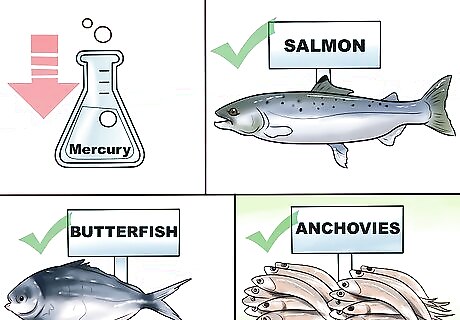
Focus on fish sources with the lowest mercury levels. Virtually every type of seafood contains mercury, so look for those with the least mercury. Consume no more than 12 ounces of low-mercury fish per week. While moderate levels of mercury may not severely damage you and your child, you should only allow yourself 3 servings of 6 ounces of it each month. If you are eating at a restaurant, ask the waiter to find out how many ounces are in a fish entrée before consuming the entire filet. Examples of high-mercury fish are swordfish, shark, mackerel, and tuna. It is advisable not to eat mercury-rich fish such as these during pregnancy.. Look out for fish that taste especially metallic, a sign of high mercury levels. Medium-mercury fish include Chilean sea bass, grouper, cod, Mahi Mahi, monkfish, and snapper. Low-mercury fish are the safest for pregnant people. Some examples are anchovies, butterfish, catfish, flounder, haddock, herring, perch, Pollock, salmon, sardines, sole, tilapia, trout, whitefish, and whiting.
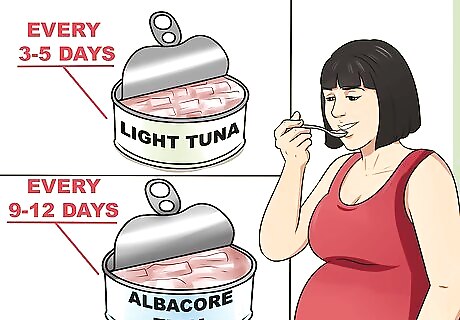
Eat tuna rarely and in small quantities. Light tuna only has a little over a third of the mercury content of regular albacore tuna. That means it is harmless enough for you to eat, but only in moderation. A 5 ounce can of chunk light tuna can be consumed safely every 3 to 5 days, and Albacore canned tuna is safe to consume once every 9 to 12 days.

Know where your fish is coming from. Mercury poisoning is not only a danger with naturally mercury-rich fish. Man-made environmental hazards such as power plants can contaminate surrounding waters and, as a result, nearby fish. Look for labels that tell you the fish came from a clean water source.
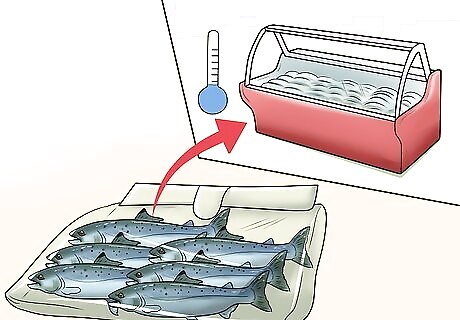
Check for proper storage of fish before purchasing. Stored fish can contain chemicals or food-borne illnesses that can put you and your developing baby at risk of sickness. Though the fishing industry takes steps to properly ship, store, and clean their product, you should still be cautious. Look for fish packaged with a NOAA label, indicating it has been inspected by the National Oceanographic and Atmospheric Administration. Only buy fresh fish that is refrigerated or on fresh ice. Fish must be kept very cold to keep from spoiling, and it should be arranged to allow draining. Frozen fish should not be purchased if the bag has been opened or broken, or if ice crystals have formed on the fillets. Scales may be duller on frozen fish and the flesh may not be as firm once thawed, but it is typically safe to eat if the integrity of the packaging has been assured. Avoid refrigerated smoked fish. Examples of smoked fish are salmon, cod and tuna. Fish bought in the refrigerator section may contain listeria, a food-borne illness particularly threatening to pregnant people. Unless you are sure the refrigerated fish has been cooked thoroughly in a casserole or soup dish, buy canned fish instead.
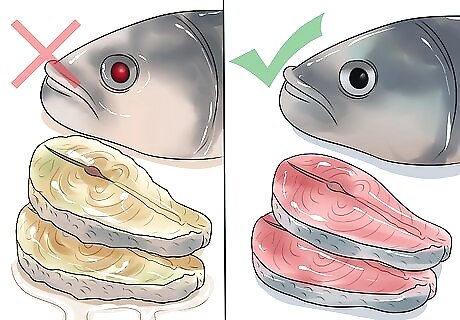
Double-check your purchase when you open it. You may not be able to identify all the warning signs of spoiled fish at the grocery store. When you get home, open the package and make sure everything looks and smells right. This will save you the hassle of having to go to a ‘plan B’ at dinnertime if the fish you purchased is inedible. Check to make sure the fish eyes are clear and slightly bulging. This indicates fresher fish. Do not purchase fish with discolored flesh. Green or yellow flesh may indicate that spoiling has begun. Dried or darkened edges also indicate that the fish has been sitting for too long and is no longer fresh. The flesh of fresh fish should be firm and should spring back into place after you touch it. The skin or scales on a fish filet should be shiny and free of slime. Gills should be bright red.

Watch out for hidden sources of fish. Certain recipes may contain fish without advertising its presence. Ask about ingredients in egg salads or pasta dishes, ethnic foods like empanadas or sushi, garnishes like fish eggs, specialty spreads like smoked salmon cream cheese, imitation seafood products, and other foods sources. Most recipes for oil-based salad dressings such as Greek dressing also contain fish. When eating in a restaurant, ask the staff about the fish content of foods like these.
Preparing Fish Correctly

Prepare fish how you prepare other meats. You can prepare fish in much the same way that you prepare chicken or pork. There is not much of a difference in how you prepare fish compared with other types of meat.

Thaw fish in the refrigerator. If fish is left unrefrigerated for too long, it can develop dangerous contaminants that can cause serious illness in pregnant people. If you have frozen fish, do not thaw it by leaving it on the counter. Instead, run the fish under cold water until it is thawed or leave it in the refrigerator overnight.

Do not eat fish that has a strong odor. Stinky fish can make even healthy people sick, and is especially dangerous for your unborn child. Fish with strong fishy or sour smells, or an odor of ammonia should not be eaten. Though most fish generally emit a unique odor, only prepare fish if it smells mild and fresh.
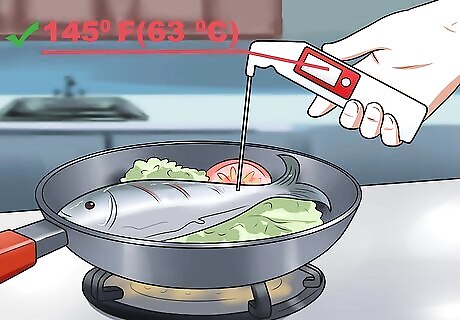
Cook all seafood thoroughly. Do not consume any fish product that has not been cooked through. Undercooked or raw fish may also transmit food-borne illness that may affect pregnant people more than others. The dangers of inappropriately prepared fish can be avoided with thorough cooking and safe preparation practices. Most seafood should be cooked to an internal temperature of 145 °F (63 °C). If you do not have a food thermometer, cook the fish until the flesh is opaque and flakes easily with a fork at multiple spots in the fillet.
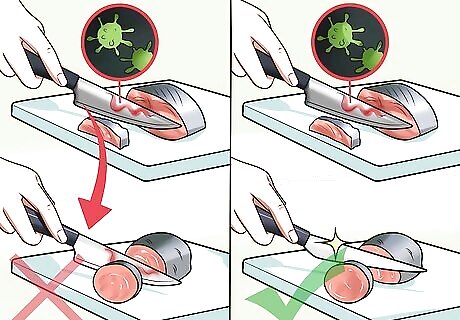
Do not cross-contaminate. If you are preparing fish that was previously raw, do not use any utensils, plates, or serving dishes to eat the fish after cooking. Use clean utensils and plates to serve prepared fish. Also, try to avoid mixing serving containers of fish to prevent the spread of fish-borne illness.




















Comments
0 comment